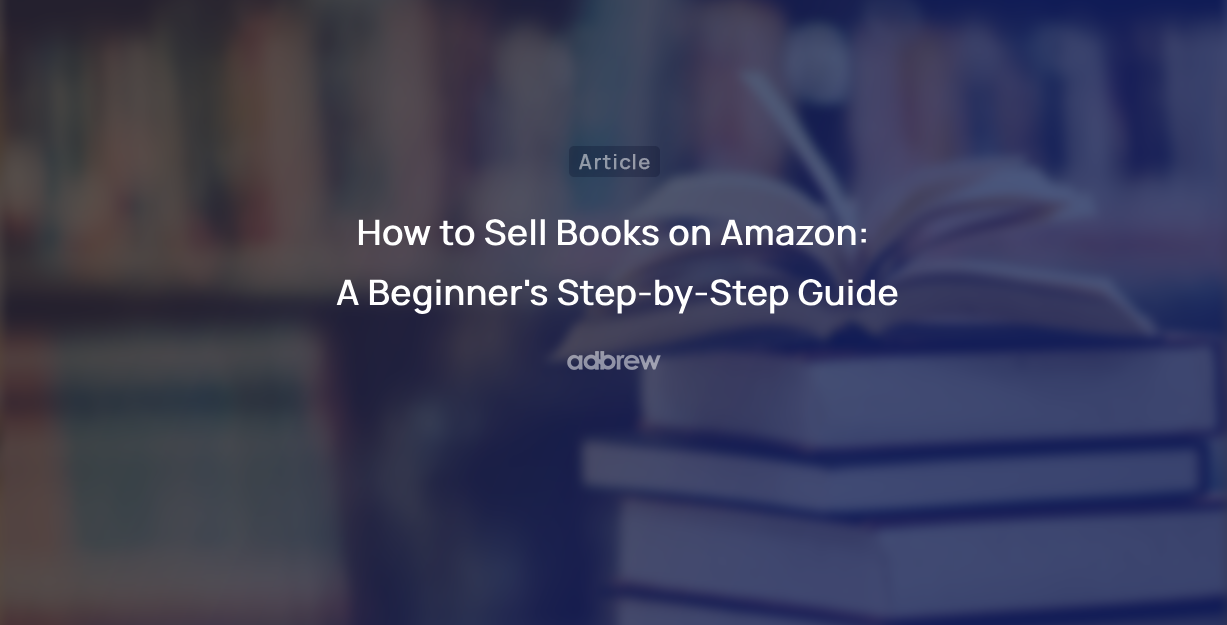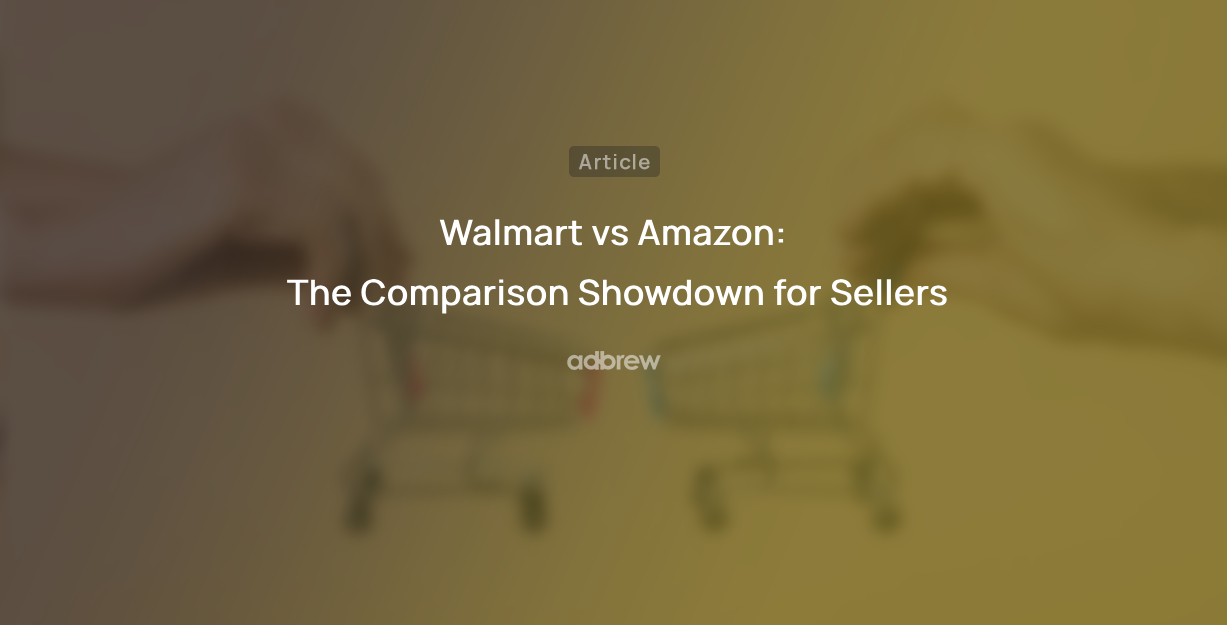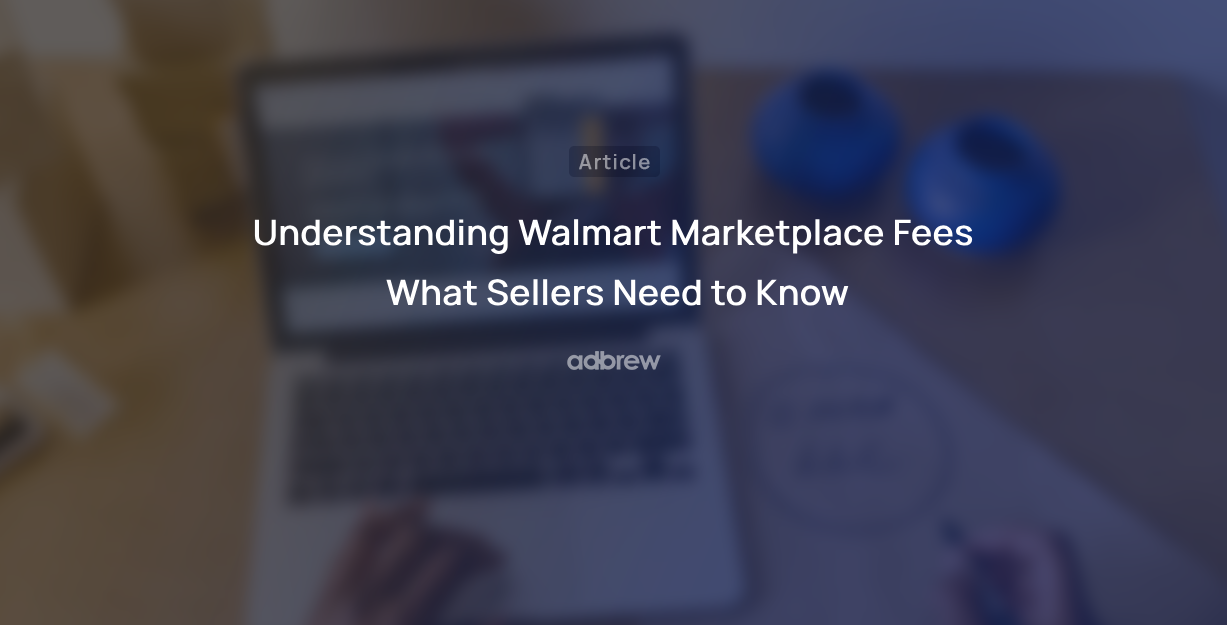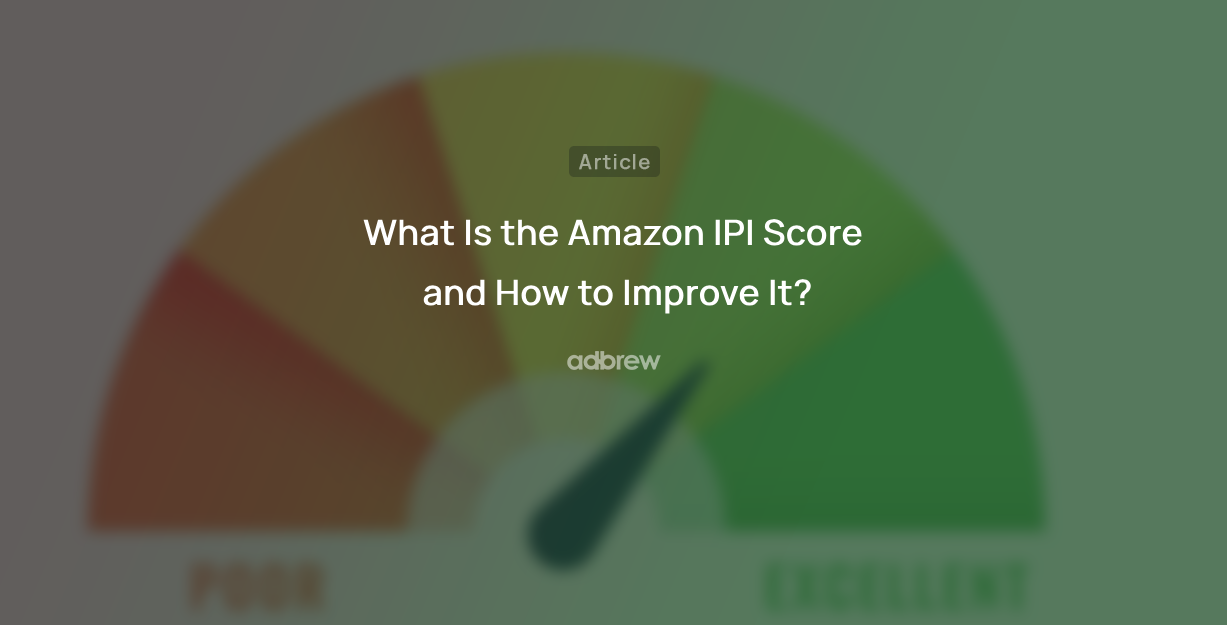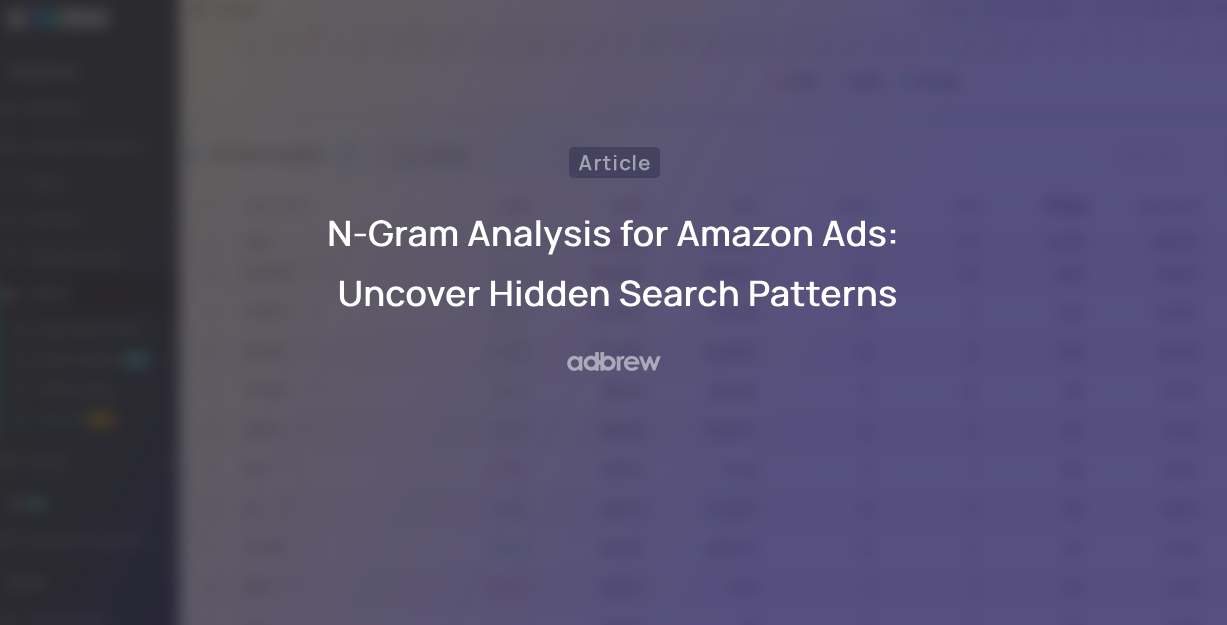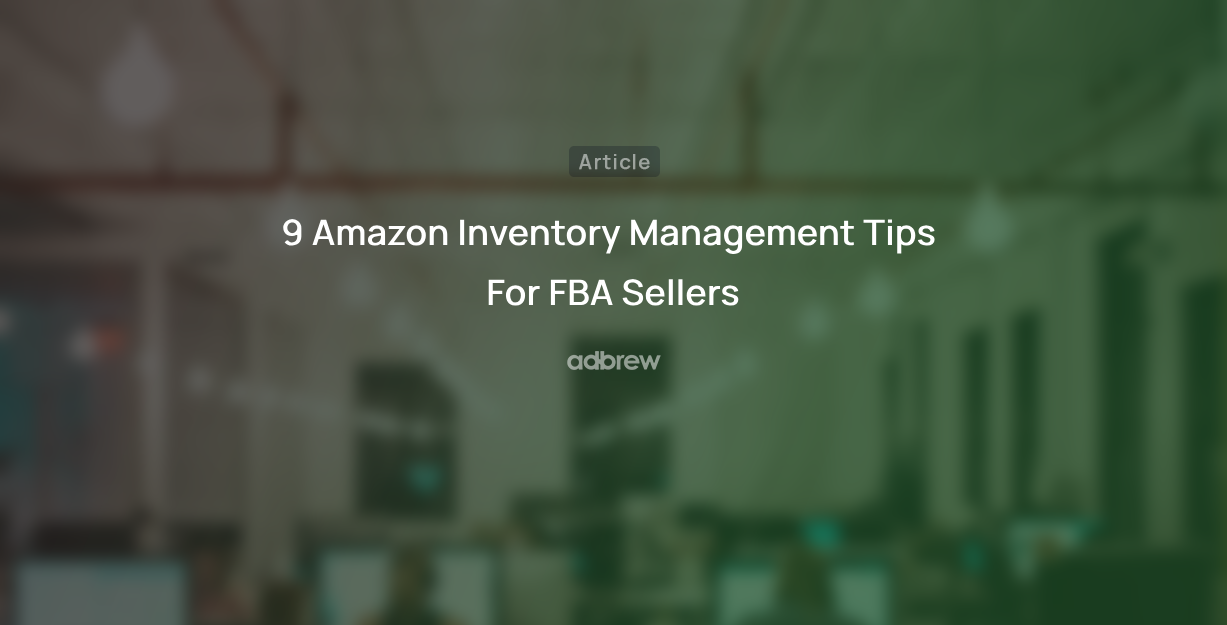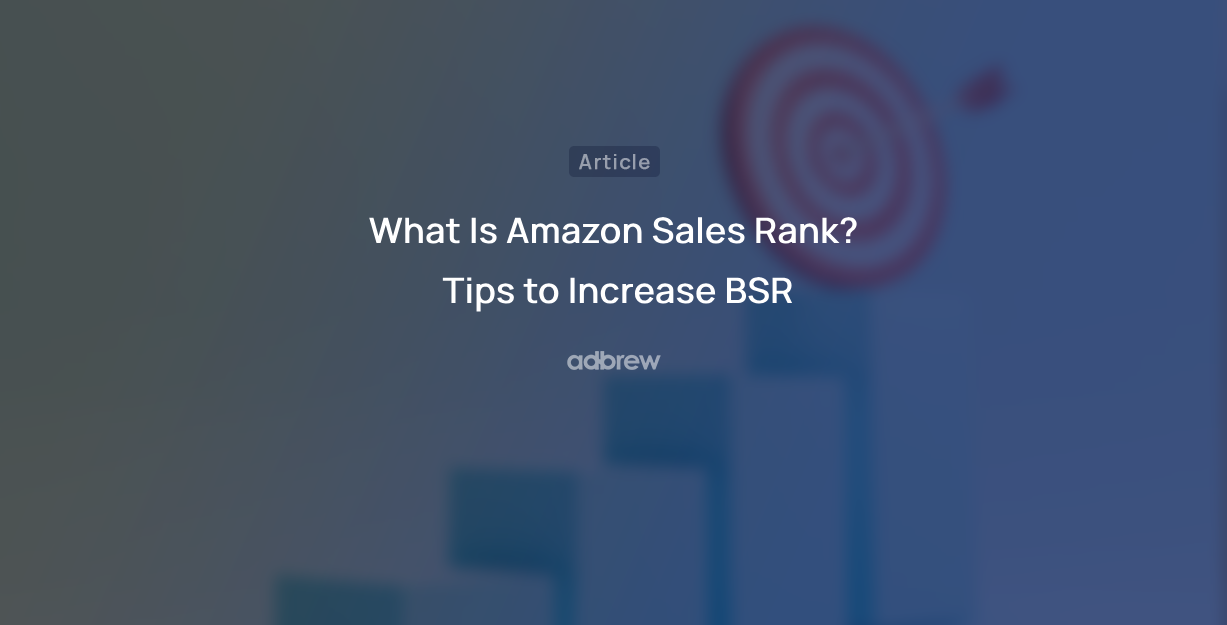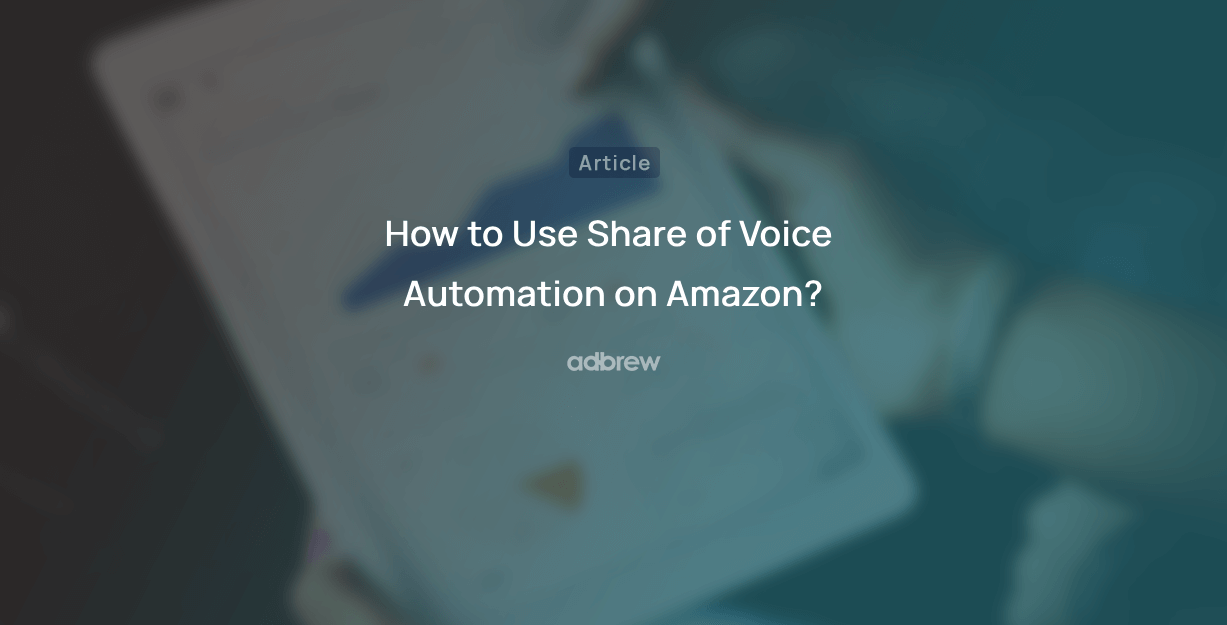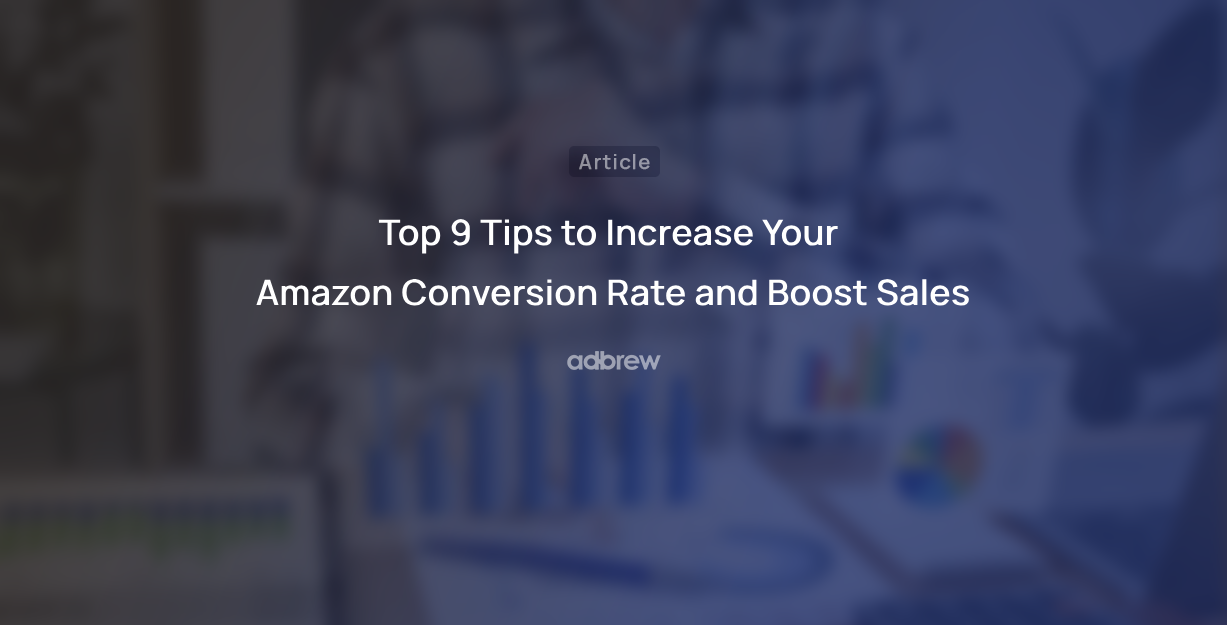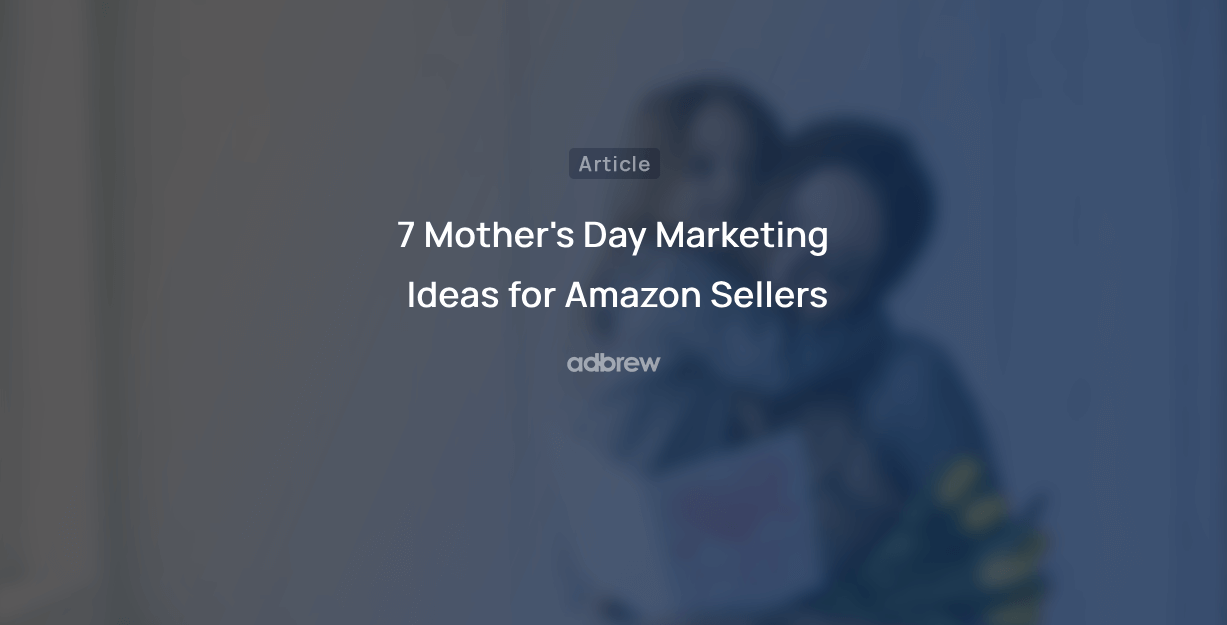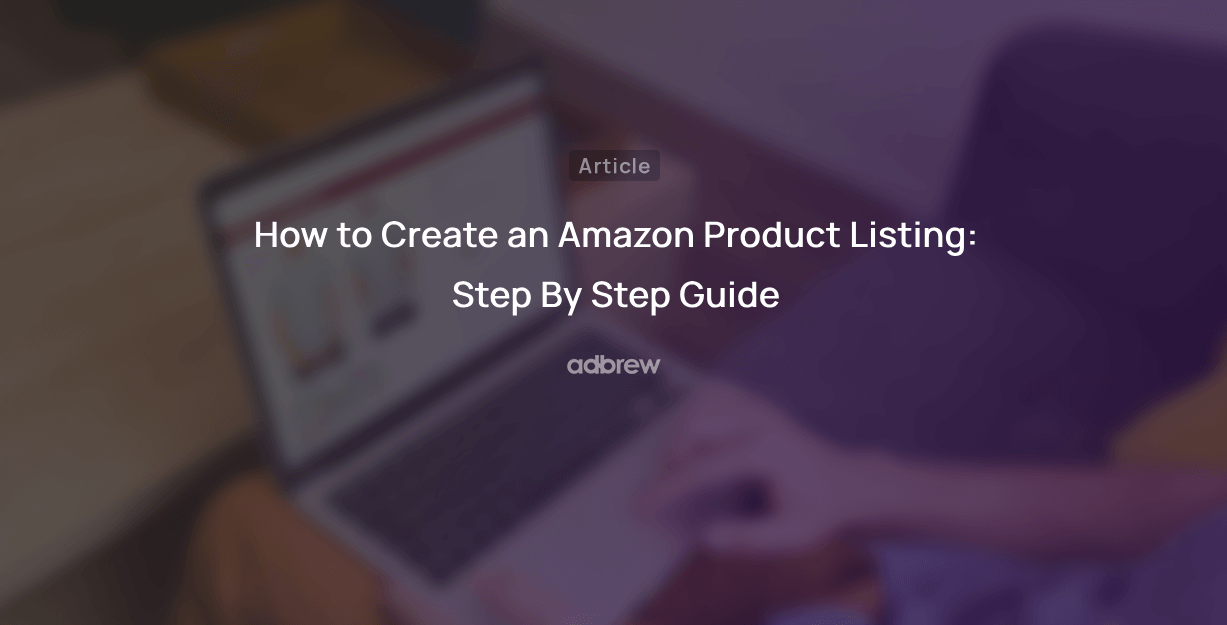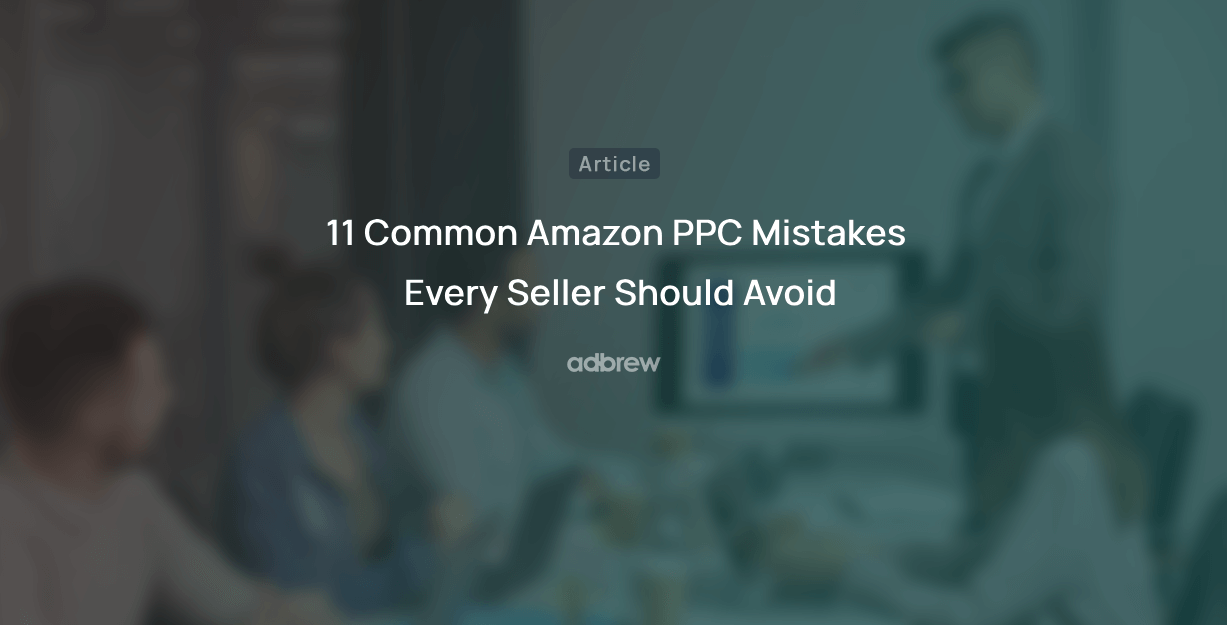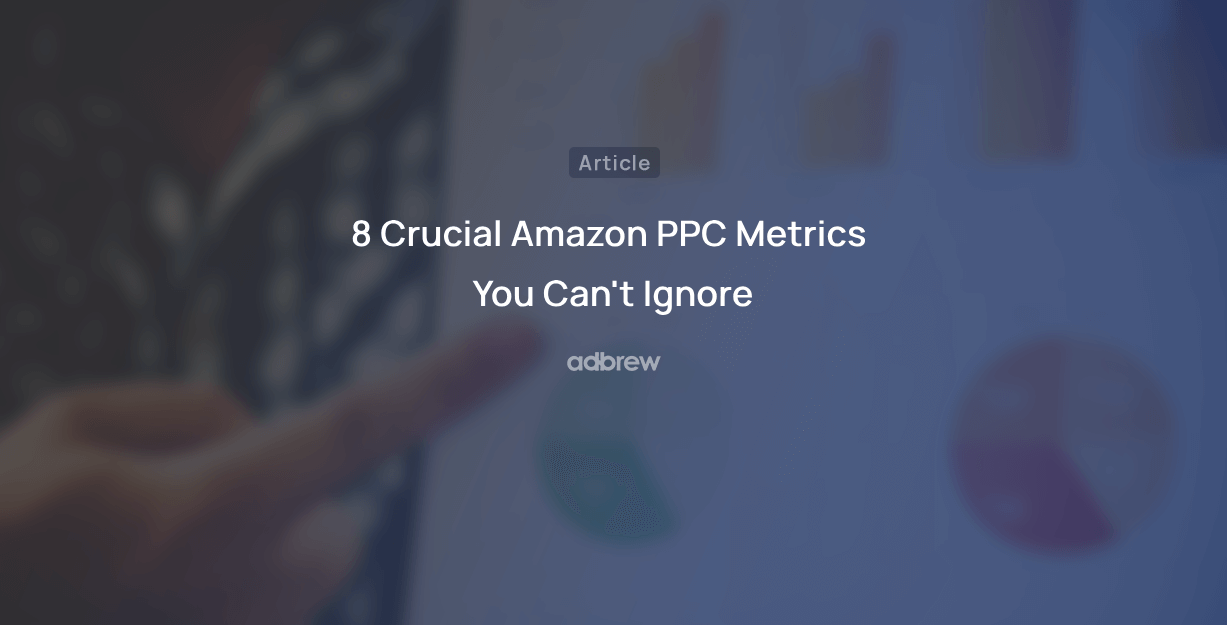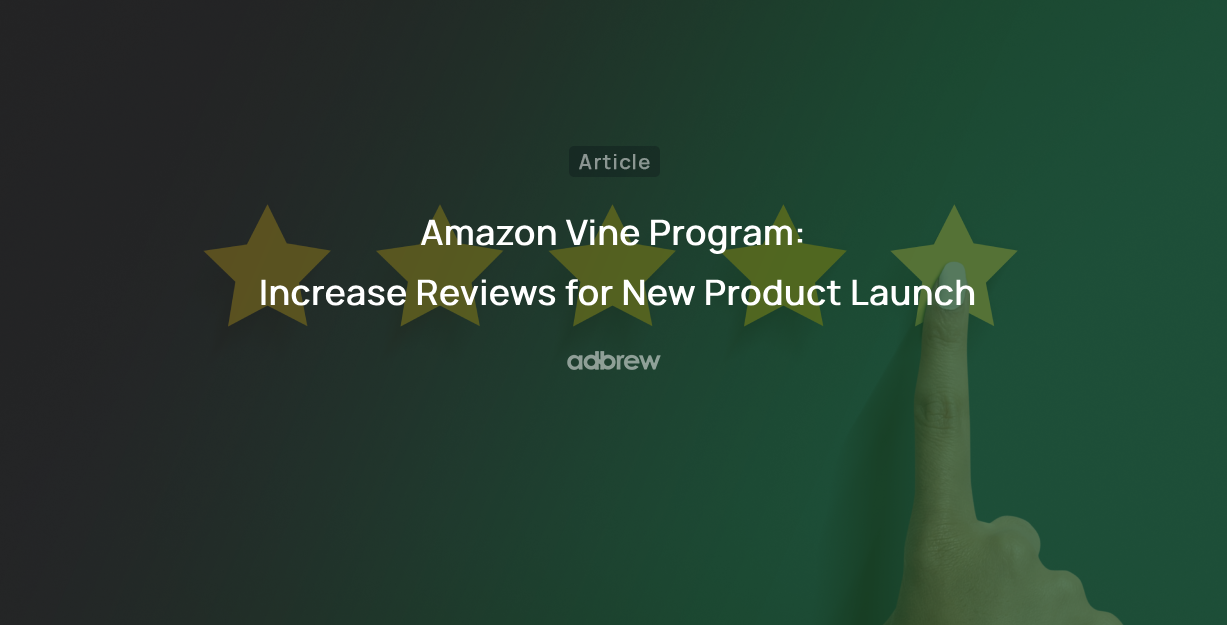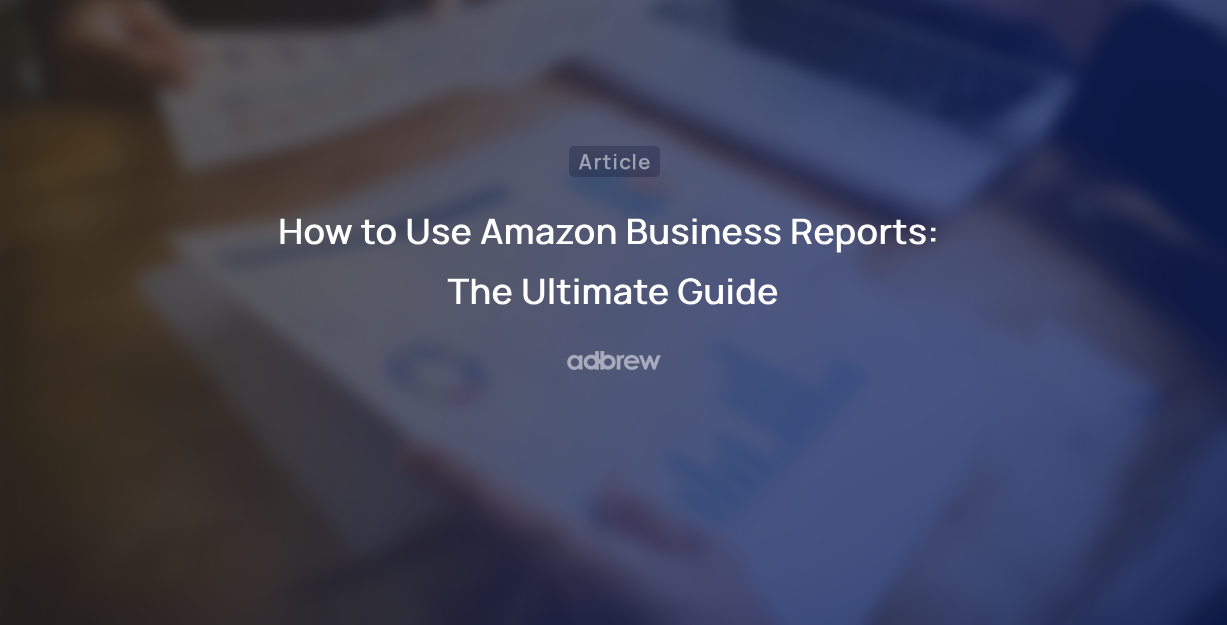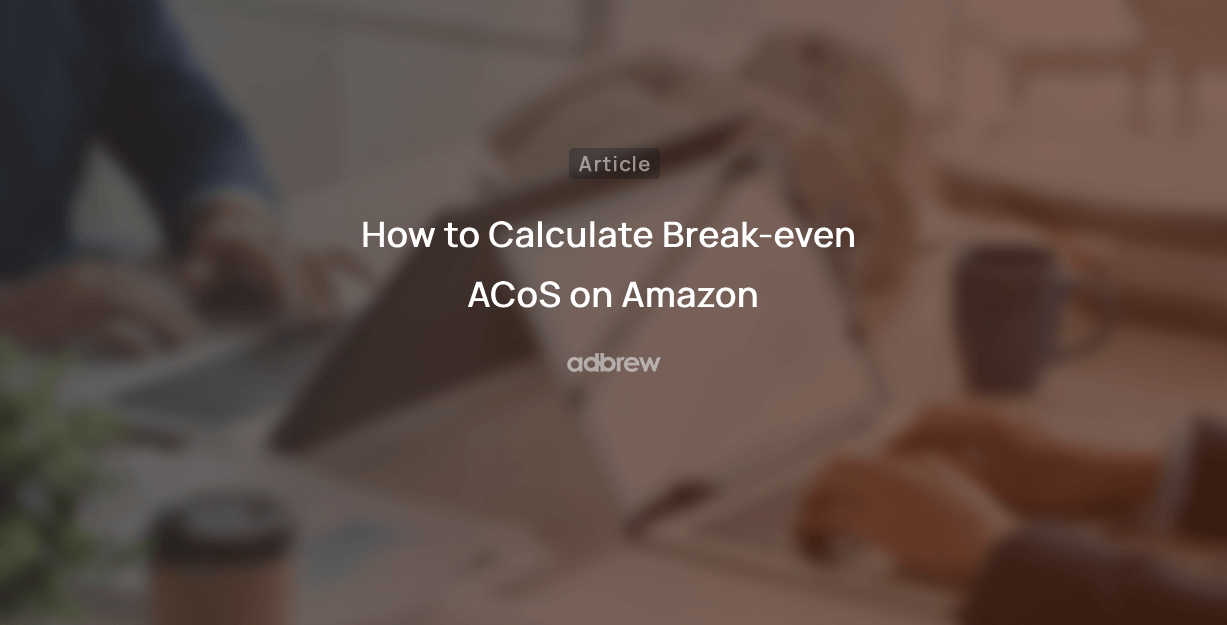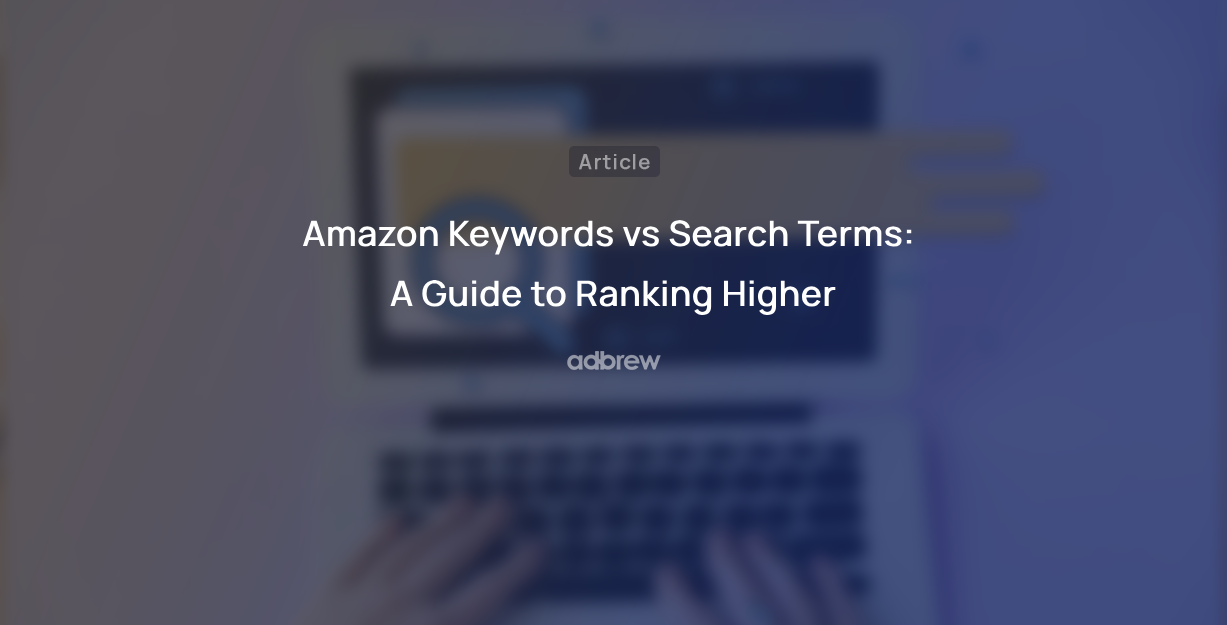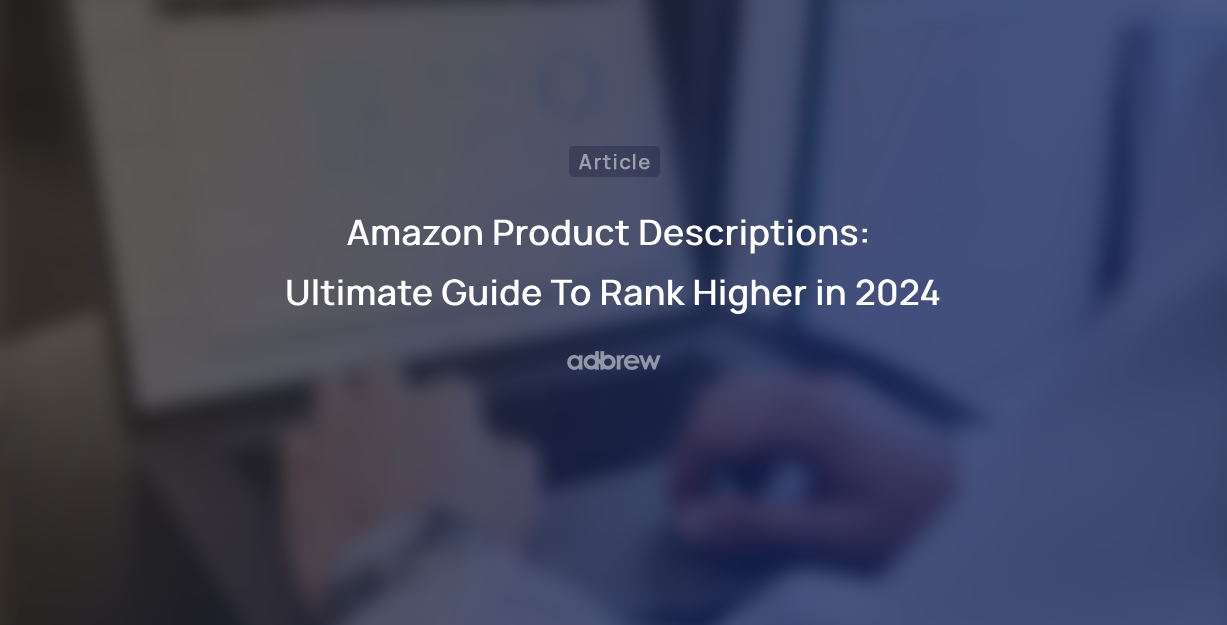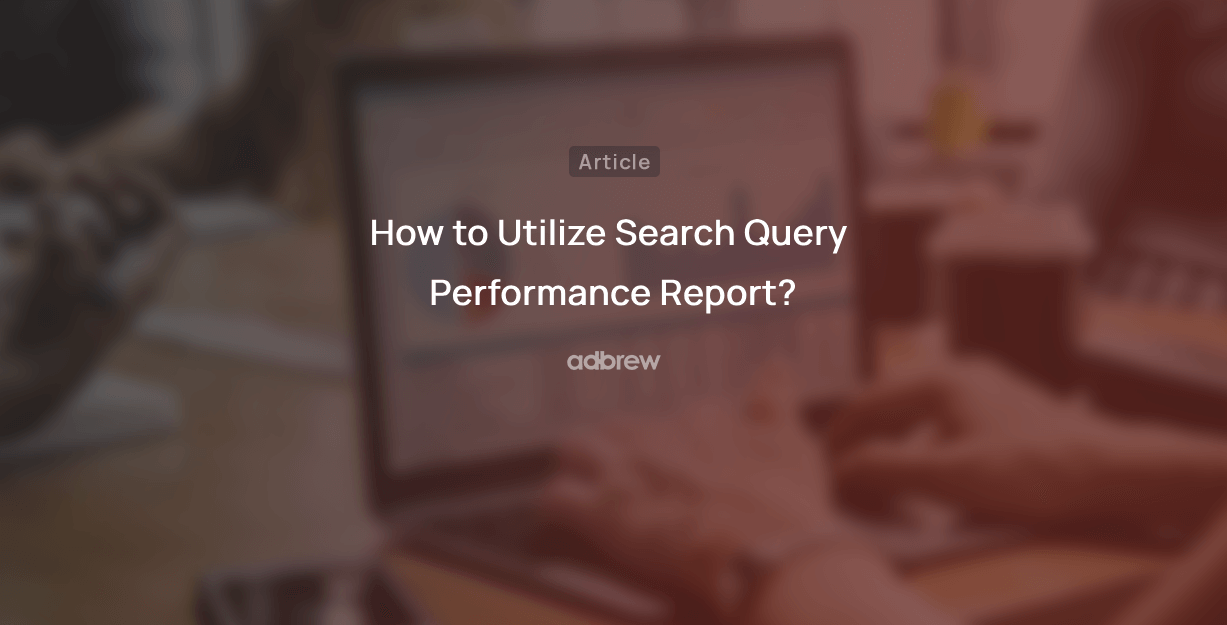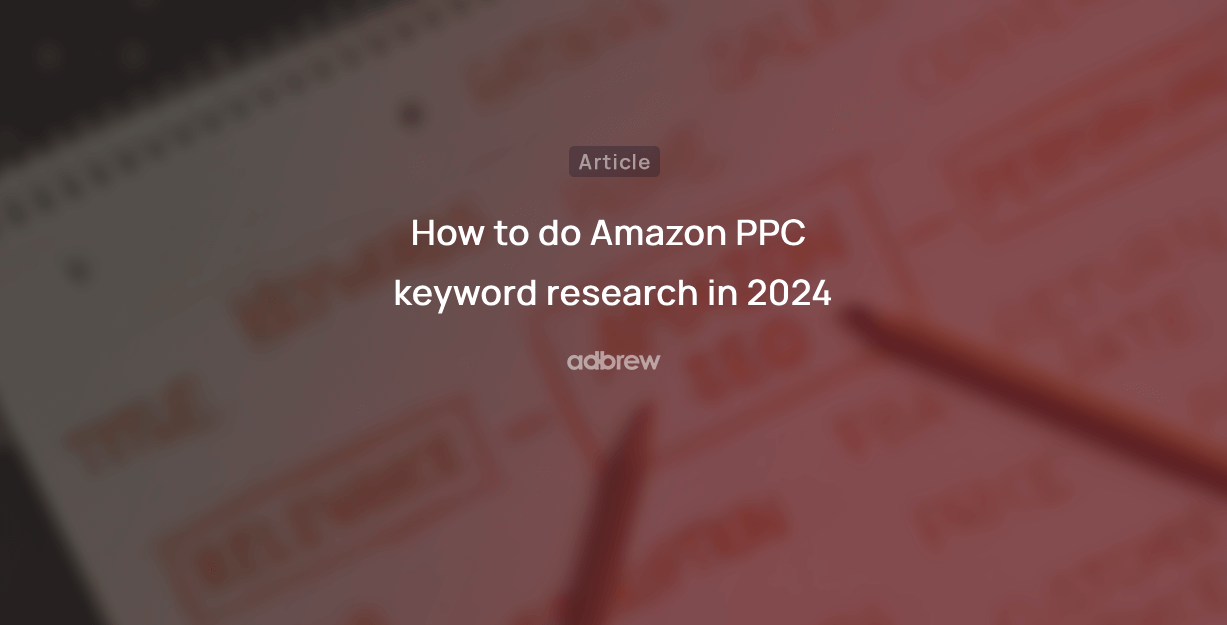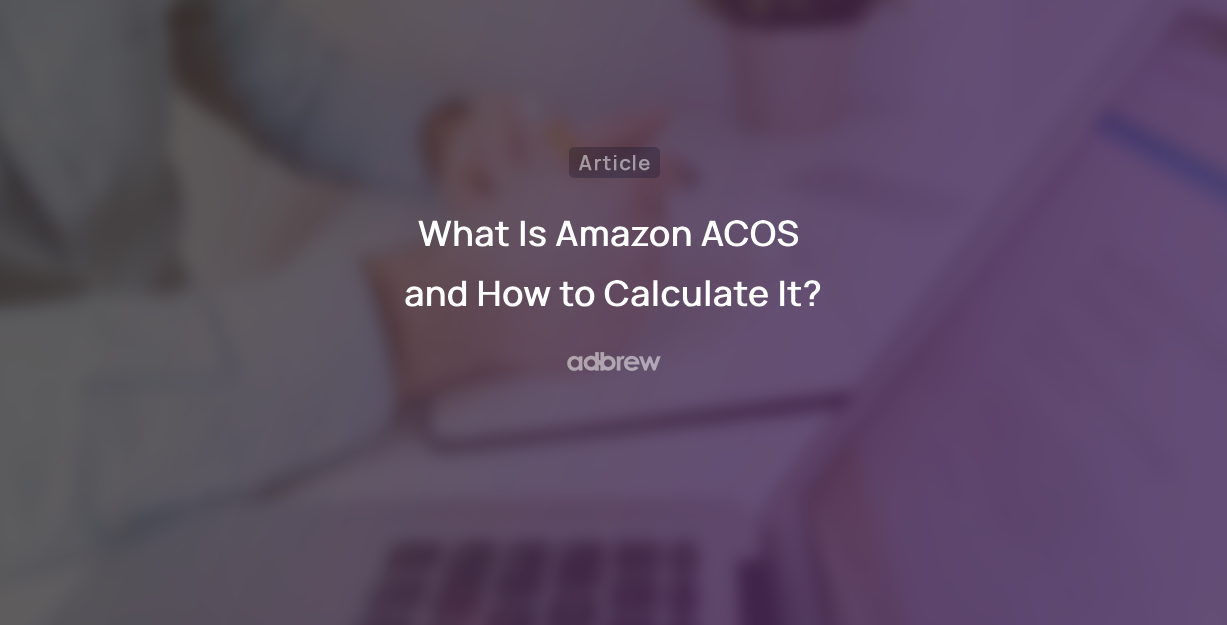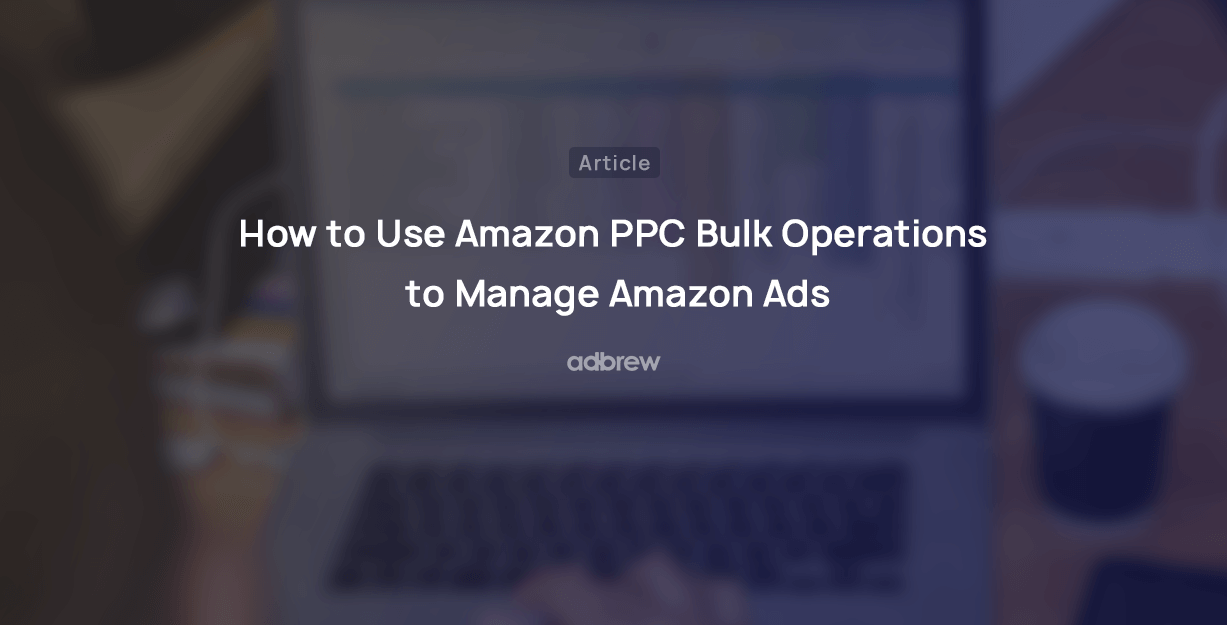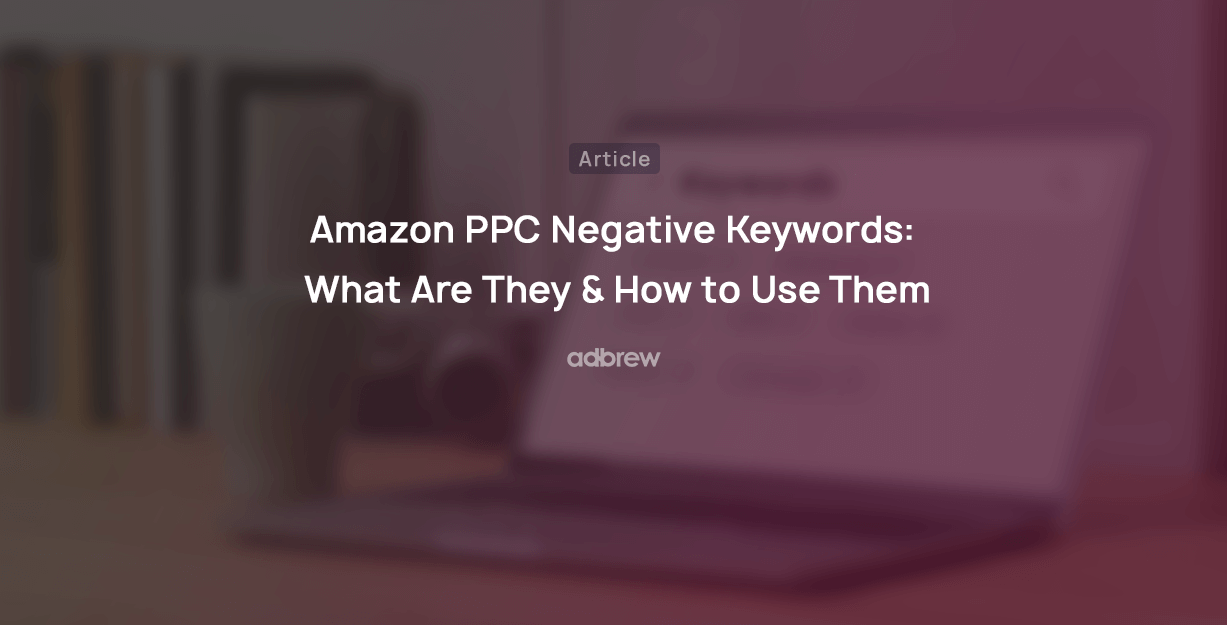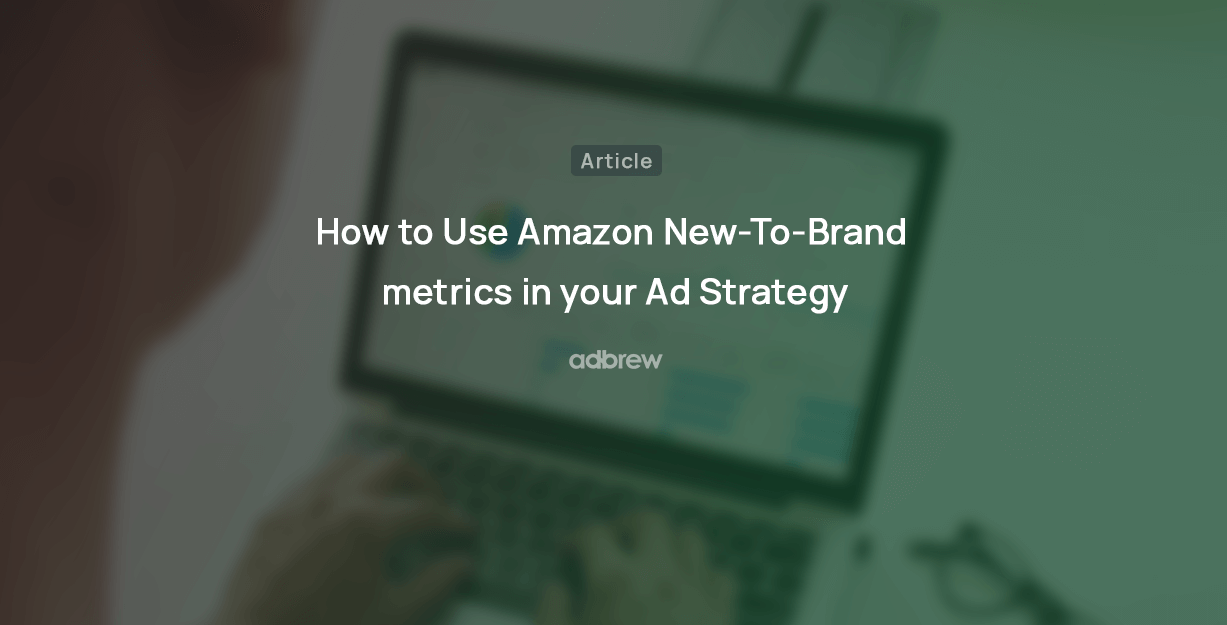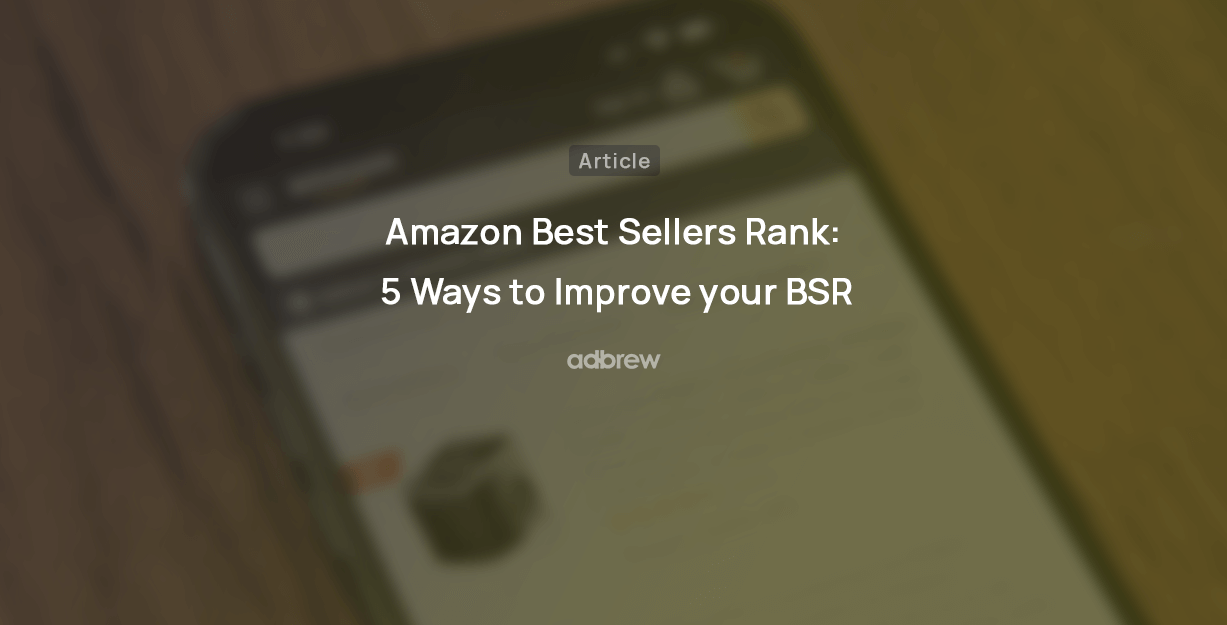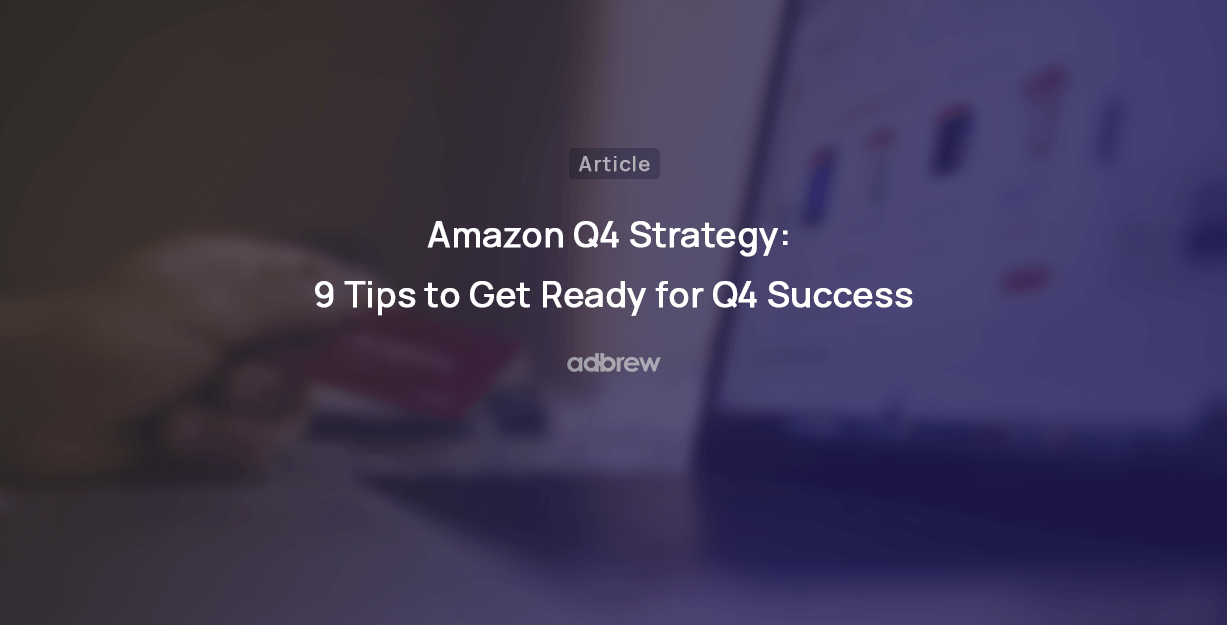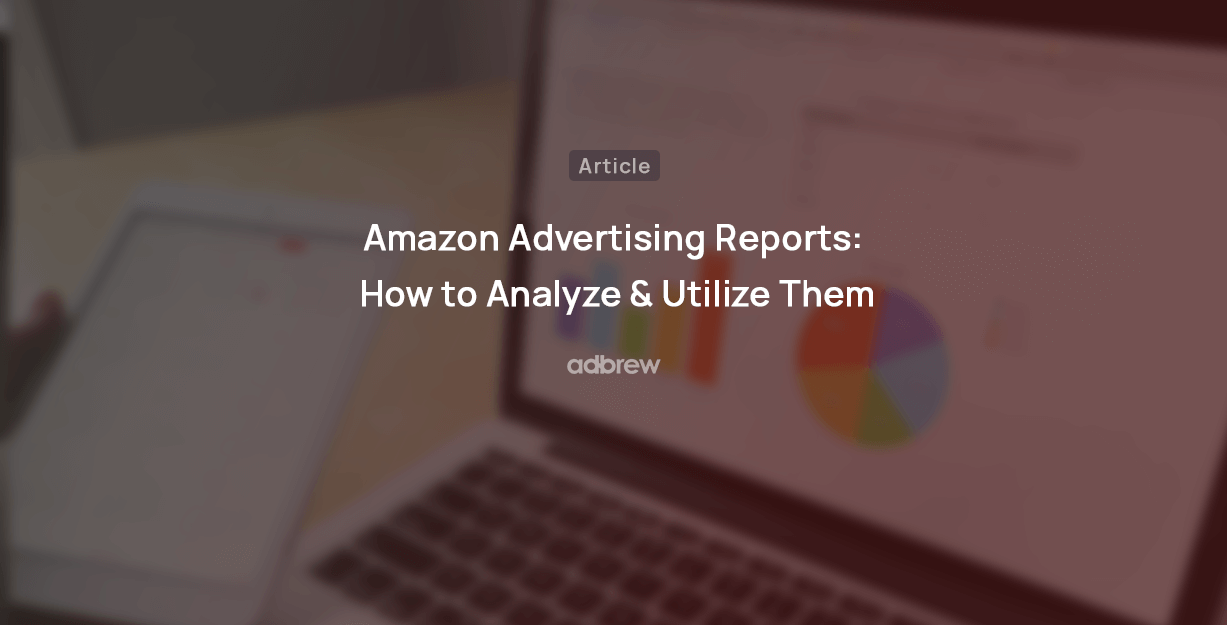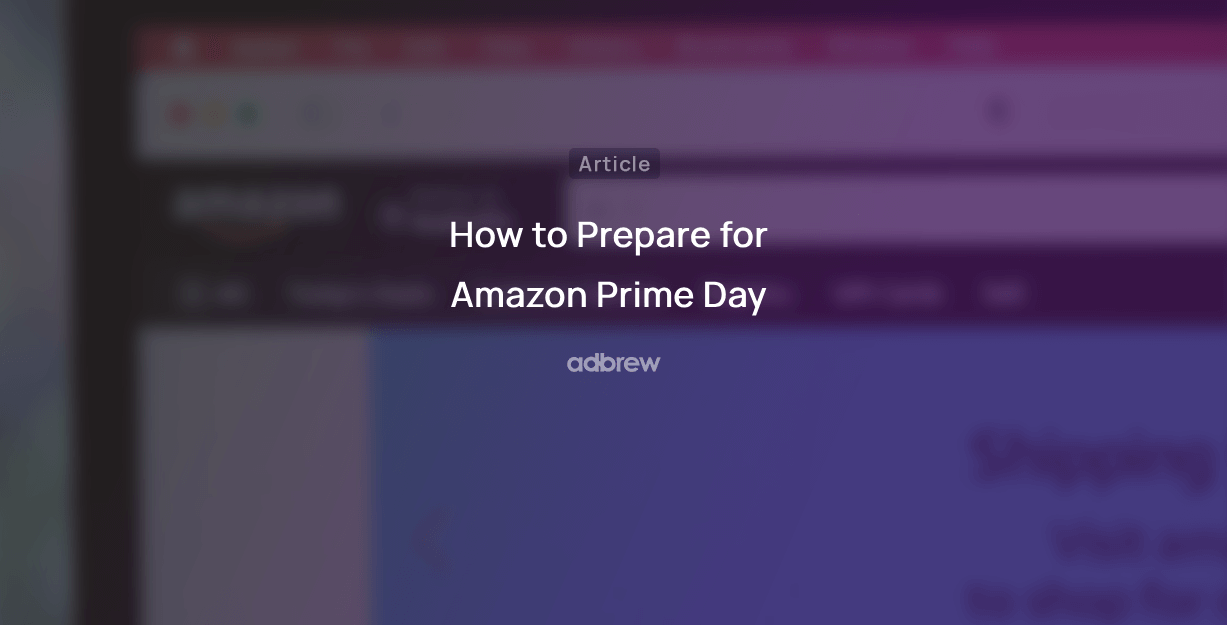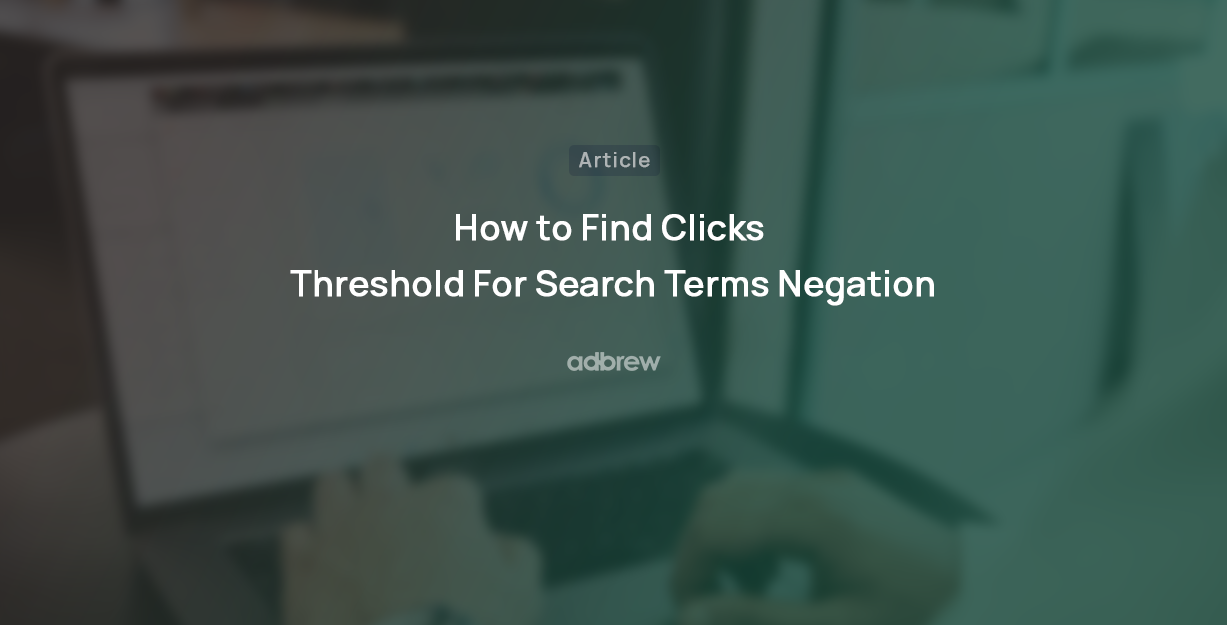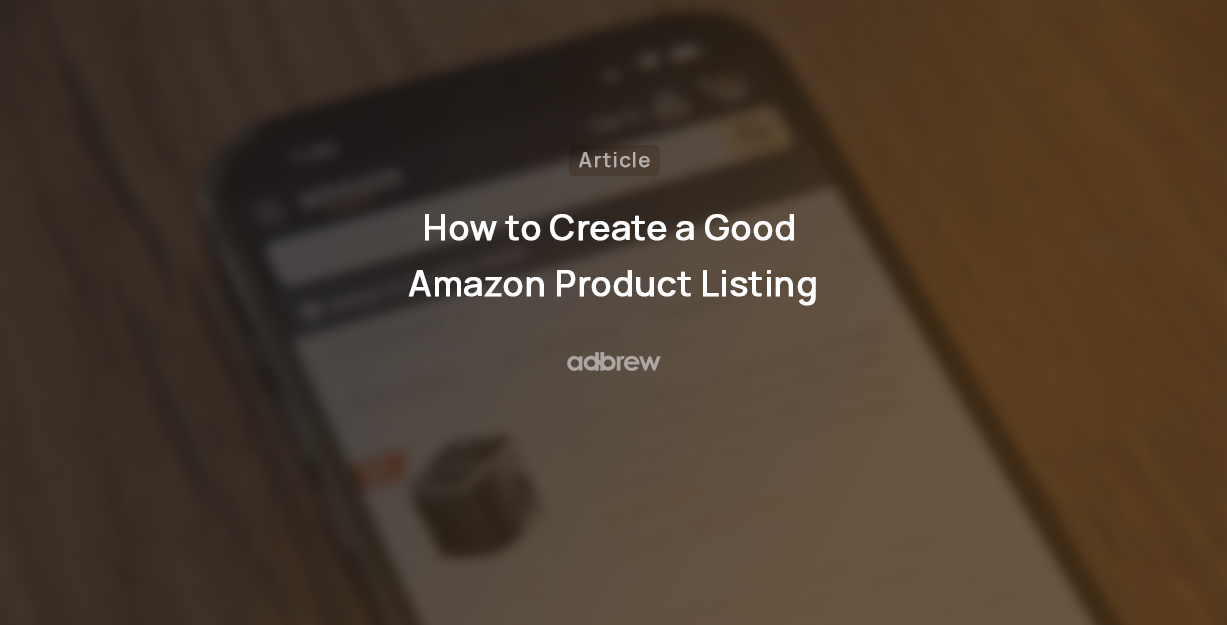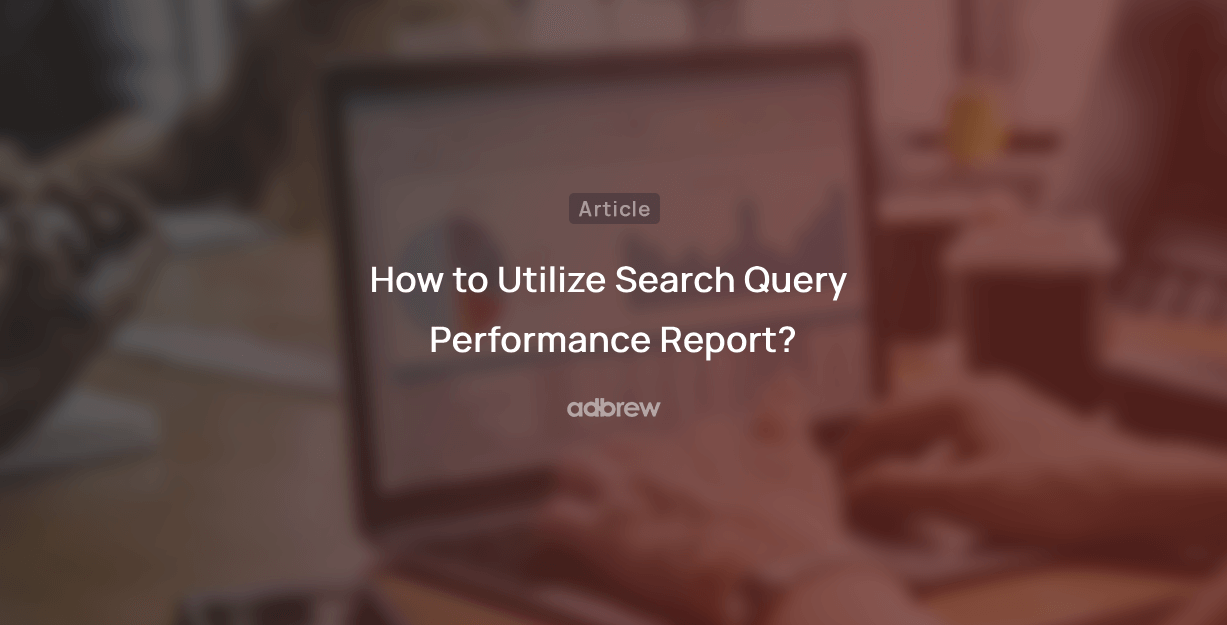
For years, Amazon sellers were in the dark. They couldn’t see what keywords customers were using to find their products, leaving them flying blind when it came to optimizing their listings and advertising campaigns.
But finally, the tides have turned!
With the launch of the Amazon Search Query Performance Dashboard, sellers now have access to valuable first-party data at the search query level.
Are you new to this report? No need to worry. In this blog post, we will explain what search query performance is, why it is important, how to access this data, and ultimately, how to use it for your Amazon sales strategy.
What is the Search Query Performance Dashboard?
The Search Query Performance Dashboard is a tool designed for brand-registered sellers to get a comprehensive analysis of search queries on Amazon. It initially helps sellers gauge the demand for a particular search query through metrics like search volume and search rank.
Subsequently, the dashboard offers crucial performance metrics at each stage of the customer’s shopping journey, including clicks, impressions, cart additions, and conversions associated with the query.
What’s more? The dashboard not only offers market-level performance data for a given query but also provides insights into your brand or product-level performance. This dual perspective enables you to compare your brand against others competing for the same search query, giving you a clearer picture of your competitive standing.
Where can I find the Amazon Search Query Performance dashboard?
1. Begin by logging in to your Amazon Seller Central account using your brand’s credentials.
2. Within Seller Central, navigate to Brands → Brand Analytics.
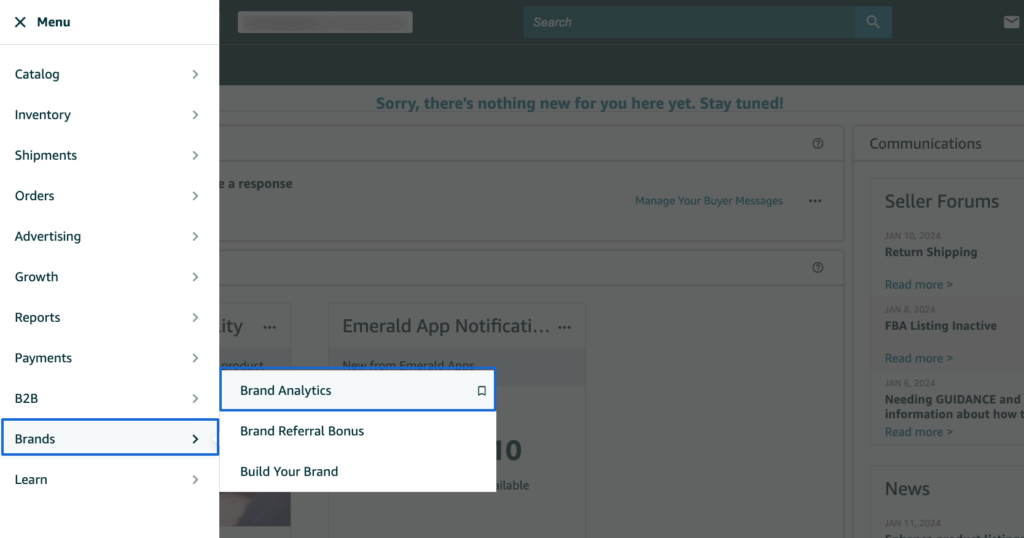
3. Once you’re in the Brand Analytics section, locate and click on the Search Query Performance tab.
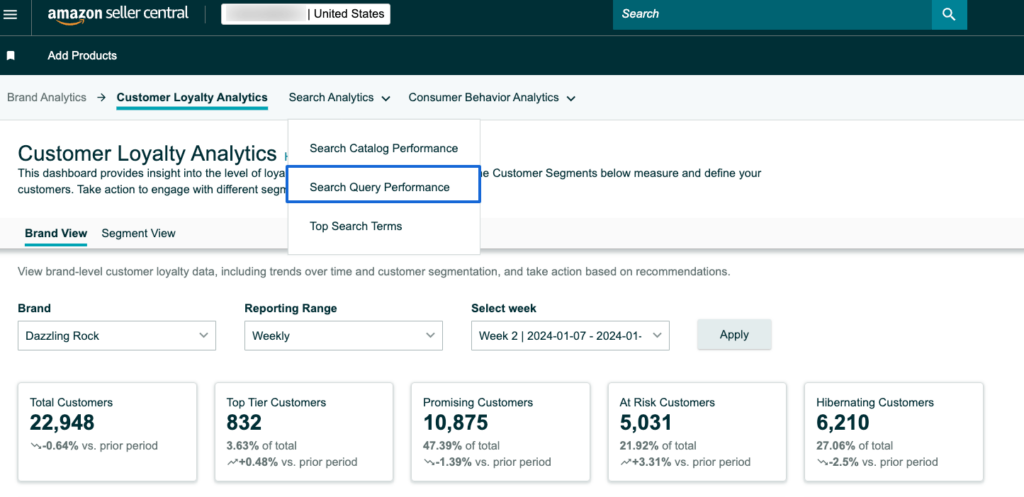
Search query performance has two views: brand view and ASIN view.
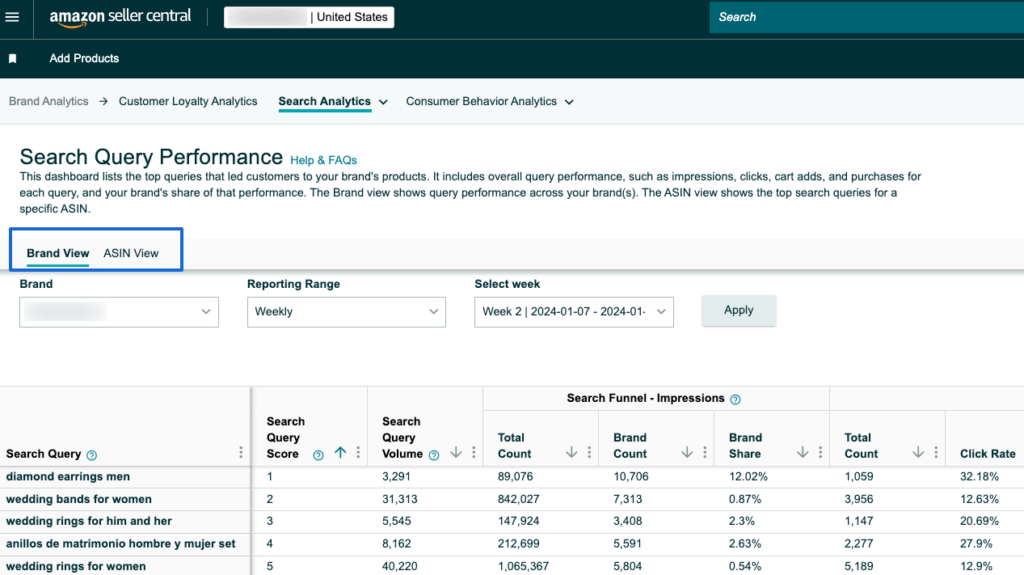
As the name suggests, the brand view will give you the performance of all products combined from your brand for a search query, while the ASIN view will give you the performance of a specific ASIN for a search query.
Eligibility and Permissions for Search Query Performance Dashboard
Brand Registration: Access to the Search Query Performance dashboard is exclusively available to sellers who have successfully registered their brand with Amazon’s Brand Registry program.
Account Permissions: To view the dashboard, you’ll need to either be the primary Seller Central account administrator for your brand or have been granted explicit permission to access Brand Analytics by the administrator.
What metrics can you find in the Search Query Performance Dashboard?
The Search Query Performance Dashboard delves into the performance of the top 1,000 customer queries associated with your brand or products. It provides a comprehensive view of each query’s demand metrics and its performance throughout the search funnel, from initial impressions to conversions.
Demand Metrics
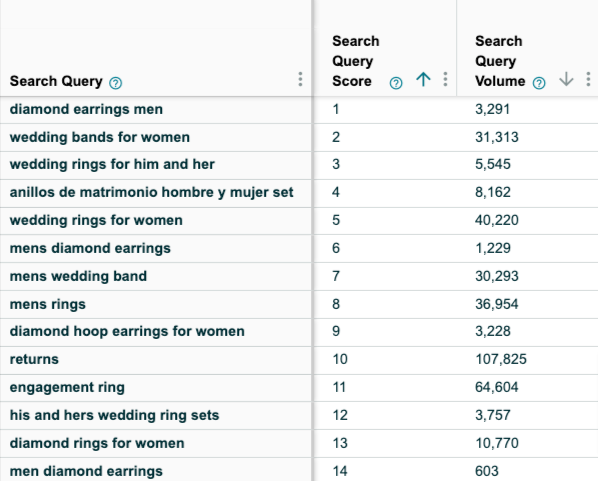
Search Query Score (1-1000): This metric gauges a keyword’s popularity and relevance to your brand or product. A higher score indicates stronger popularity and alignment.
Search Query Volume: This metric unveils the precise number of times a keyword was searched on Amazon within the specified time period, providing a concrete measure of search demand.
Search Funnel - Impressions

Total Count: The total number of products that appeared on the search result page for a query. For example, if a shopper searches for the term “dog toys,” and there are 50 products on the first page of search results, Amazon will record the impressions for that search query as 50.
Brand Count: The total number of products from your brand that appeared in search results for a given query. For instance, if 5 products from your brand appear on the search result page when someone searches for a query, your brand count will be 5.
Brand Share: This represents the proportion of impressions attributed to your brand (Formula: Number of Brands / Total Count of Impressions). Using the above example, your brand share will be 10%.
Search Funnel - Clicks
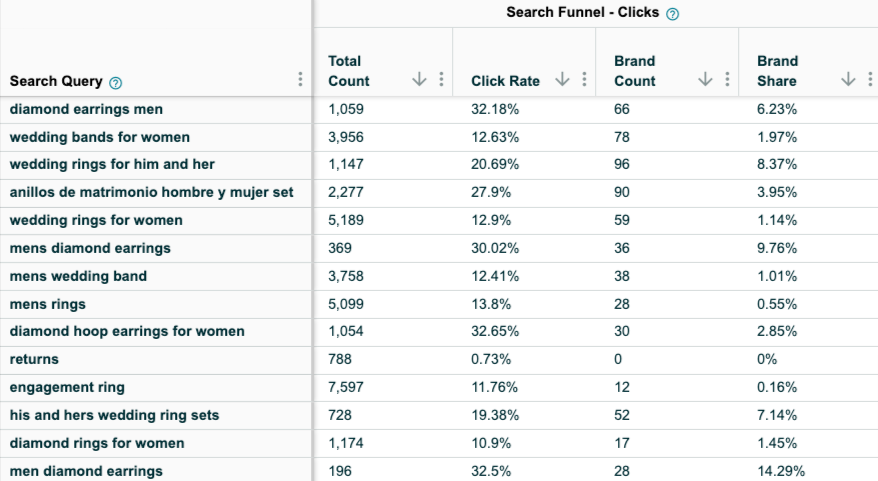
Total Count: The total number of clicks that products received on the search results page for a given query. This includes clicks on both organic and sponsored listings.
Click Rate: The percentage of searches that resulted in a click. Calculated as Click Count / Search Query Volume * 100%.
Brand Count: The total number of clicks that products from your brand received for a particular query.
Brand Share: The proportion of clicks attributed to your brand’s products. Calculated as Brand Click Count / Total Click Count * 100%.
Search Funnel - Cart Adds

Total Count: The total number of times shoppers added products to their carts after clicking on them from the search results page for a specific query.
Cart Add Rate: The percentage of searches that led to a product being added to the cart. Calculated as Cart Add Count / Search Query Volume * 100%.
Brand Count: The total number of times shoppers added products from your brand to their carts after clicking on them from the search results page for a particular query.
Brand Share: The proportion of cart adds attributed to your brand’s products. Calculated as Brand Cart Add Count / Total Cart Add Count * 100%.
Search Funnel - Purchases
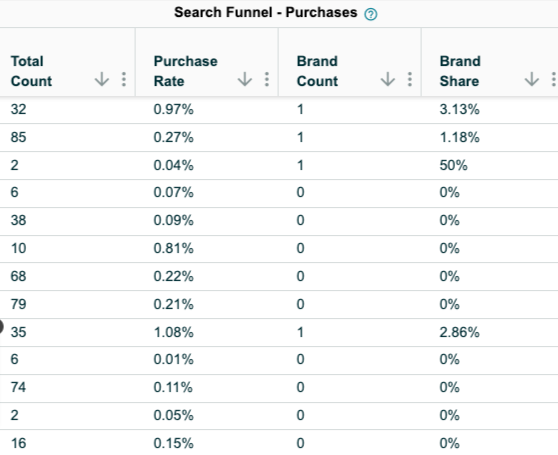
Total Count: The total number of times shoppers purchased products after adding them to their carts from the search results page for a specific query.
Purchase Rate: The percentage of searches that resulted in a purchase. Calculated as Purchase Count / Search Query Volume * 100%.
Brand Count: The total number of times shoppers purchased products from your brand after adding them to their carts from the search results page for a particular query.
Brand Share: The proportion of purchases attributed to your brand’s products. Calculated as Brand Purchase Count / Total Purchase Count * 100%.
Other Metrics Available in the Report
Price (Median): Represents the median price across all ASINs displayed for a given query at the time of impression.
Brand Price (Median): Represents the median price across all ASINs belonging to your brand for a given query at the time of impression.
Same-Day Shipping Speed: Same-day shipping speed guarantees that customers will receive their products on the very day of purchase. This metric measures the occurrences of ASINs featuring the same-day delivery message being “impressed/clicked/cart-added/purchased” on the search results page corresponding to the specific query.
1-Day Shipping Speed: One-day or next-day shipping reflects the frequency of ASINs with a “One-Day” delivery message being “impressed/clicked/cart-added/purchased” on the search results page for the given query.
2-Day Shipping Speed: This metric represents the occurrences of ASINs with a “Two-Day” delivery message being “impressed/clicked/cart-added/purchased” on the search results page for the specific query.
How to Use Search Query Performance Report?
1. Find New Keyword Ideas for Advertising Campaigns
Start by cross-checking your Amazon advertising targeting report with the search query performance data. This process helps uncover keywords that may not be part of your current advertising campaign but are proving significant in driving user engagement.
Identify keywords with diverse performance metrics, such as high order volume, low order volume but a high conversion rate, or other noteworthy patterns. These insights can guide you in identifying keywords with untapped potential or those that may be underutilized in your existing campaigns.
Once promising keywords are identified, consider creating separate campaigns to specifically target these terms. Group these keywords based on patterns in different campaigns to have a better control.
2. SEO Optimization
If you notice that there are many highly relevant keywords with a low impression share for your brand, it suggests that your product has a low organic ranking and isn’t appearing on the first page of search results.
To improve this, consider adding these keywords to your product title, description, bullet points, A+ content, and backend keyword. This will help your product get indexed and ranked for these terms.
3. Identify Keywords for Ranking Campaigns
Apart from SEO optimization, sales velocity, and conversion rate are two factors that primarily influence the organic ranking of your product.
Utilize the Search Query Performance Report to identify both your and the category conversion rate for a search query. Calculate the category conversion rate using total purchases/total clicks and the brand conversion rate using brand purchases/brand clicks.
Next, identify search terms where your brand has a higher conversion rate than your competitors. Finally, target these keywords with exact match keyword targeting in your advertising campaign to increase sales velocity and rank higher in organic search results.
4. Discover Seasonal Keywords
The Amazon Search Query Performance Dashboard offers historical data at the search term level, tracking week-over-week information. This enables you to identify keywords that influenced sales for either your brand or category during a specific timeframe.
For example, you can analyze the week-over-week performance for December to pinpoint keywords that were particularly effective in driving sales to your brand during that month. These insights can then be applied to inform and enhance your strategy for the upcoming Christmas season.
5. Are my Sponsored Ads Canbalizing Organic Sales?
We have always wondered whether our sponsored ads, which appear in the first 4 search results, might be affecting our organic sales, particularly when our product is already ranking in the top 10 organic search results.
SQP provides a clear way to test this impact. Consider pausing your ads for a few weeks for a search query where you already have a high ranking in organic search. Over the next two weeks, closely monitor your click share and purchase share. If you observe a decrease, it indicates that your sponsored ad played a significant role in driving sales in the past. If there’s no decline, it suggests that your sponsored ad was cannibalizing your organic sales.
Ready to get started with Adbrew?
Unlock the true potential of Amazon advertising with Adbrew’s state-of-the-art PPC software
Final Thoughts:
We’ve delved deep into the Amazon Search Query Performance Report, unlocking its treasure trove of data. But here’s the thing: information alone isn’t enough. It’s what we do with it that truly matters.
Think of these insights as raw gems waiting to be polished. By applying them strategically, we can transform them into golden nuggets that boost our visibility, sales, and ultimately, success on Amazon.
Frequently Asked Questions:
What is search queries on Amazon?
This refers to the keywords or phrases that customers enter into the Amazon search bar to find specific products or categories. These can be broad (“running shoes”) or more specific (“women’s waterproof trail running shoes with ankle support”).
How can I use the Search Query Performance report to improve my listings?
By analyzing the data in the report, you can identify:
High-performing keywords: Focus on optimizing your listings for keywords that drive high impressions, clicks, and conversions.
Low-performing keywords: Identify keywords that are not generating results and consider removing them from your listings or optimizing them further.
Missing keywords: Discover new keywords that customers are searching for and that you may not be targeting yet.
Competitor analysis: Compare your performance to other sellers for the same keywords and identify areas for improvement.
Pricing strategies: Analyze the ASP and conversion rate for different keywords to adjust your pricing strategy for optimal results.
How often should I check the Search Query Performance report?
It’s recommended to check the report regularly, ideally at least once a week. This allows you to monitor trends, identify changes in customer behavior, and make timely adjustments to your listings and advertising campaigns.
What is Amazon Search Catalog Performance dashboard?
The Amazon Search catalog performance dashboards is a tool available to brand-registered sellers on Amazon Seller Central. It provides insights into how your product catalog is performing in Amazon search results, based on customer search behavior.
How to download Amazon Search Query Performance report?
To download data, choose your desired reporting range and click the “Generate Report” button located in the top right. You will then be redirected to the download manager page, where you can proceed to download the file.
Recent Posts
Take your Amazon PPC advertising to the next level

Related Blogs
Running Amazon ads with an empty shelf? You might as well be burning cash. Many sellers focus on optimizing bids, […]
In today’s competitive digital landscape, growing your eCommerce brand requires more than just a standalone website or a single marketplace […]
Are you an Amazon seller looking to offload excess inventory or seasonal items? The Amazon Outlet program might be just […]
Turning your bookshelf into a source of income has never been easier, thanks to Amazon. If you have books collecting […]
If you’re an Amazon seller, encountering an account suspension or policy violation can be a significant setback. But with the […]
Introduction Amazon dropshipping is an increasingly popular way to run an e-commerce business without the need to store or ship […]
Introduction The Amazon Influencer Program is a great way for content creators to turn their influence into earnings. This program […]
Introduction Amazon Kindle Direct Publishing (KDP) is a platform that allows authors to self-publish their work as ebooks or print […]
Selling on Amazon offers many opportunities for businesses, but it’s essential to understand the costs involved with Fulfillment by Amazon […]
Walmart is quickly becoming a popular platform for brands and sellers to connect with more customers. One way to boost […]
In today’s competitive retail landscape, reaching the right audience at the right time is crucial for success. Walmart’s Demand Side […]
In today’s fast-paced eCommerce landscape, shoppers demand speedy delivery. Walmart has responded by offering 2-day shipping, giving sellers on the […]
Running successful Walmart advertising campaigns takes more than just setting them up—it requires ongoing optimization. A Walmart PPC (Pay-Per-Click) audit […]
Are you ready to tap into the massive potential of Walmart Marketplace? With millions of daily visitors and a loyal […]
In the world of e-commerce, Amazon and Walmart reign supreme, dominating the retail landscape. These two giants offer vast opportunities […]
Are you a brand owner struggling to maintain control over your products on Walmart? The Walmart Brand Portal is here […]
Are you dreaming of a passive income stream from your Walmart store? The allure of an automated Walmart store with […]
Are you a seller looking to tap into the massive market of private-label brands? Walmart, one of the world’s largest […]
Tired of your Walmart products getting lost in the shuffle? In this blog post, we’ll dive into the essential strategies […]
Ever wondered why some Amazon sellers seem to have a magic touch with product bundles? It’s not luck—it’s strategy. Bundling […]
If you’re a Walmart seller looking to grow your business through retail media, Walmart Connect could be a game-changer. But […]
If you’re an Amazon seller, you may have noticed a portion of your inventory marked as “reserved” without knowing exactly […]
Have you ever wondered what managing your own Amazon orders is like? Switching from Fulfilled by Amazon (FBA) to Fulfilled […]
Walmart Marketplace offers an exciting opportunity for sellers to reach a vast audience by listing their products on Walmart’s platform. […]
Selling products on online marketplaces has become a vital strategy for businesses to reach more customers. If you’re looking to […]
Are you a Walmart seller aiming to improve your visibility and sales? In this blog, we will explore Walmart SEO, […]
As an Amazon brand owner, maintaining control over your product listings is essential to protect your brand’s reputation and customer […]
Improving your sales on Walmart starts with understanding how to consistently win the Buy Box. Securing this position can make […]
Are you an Amazon seller struggling to increase your rating? A high seller rating is crucial for attracting new customers […]
As an Amazon seller, providing the best customer service is paramount to maintaining a positive customer experience. One key metric […]
If you’re an Amazon seller and curious about Amazon IPI score and its impact on your business, this blog post […]
Introduction Starting an Amazon subscription box business presents a unique opportunity to tap into the growing trend of curated, recurring […]
Thinking about using Fulfillment by Amazon (FBA) to sell on the Amazon marketplace? Awesome! But before you box up your […]
Thinking about using Fulfillment by Amazon (FBA) to streamline your Amazon business? While FBA offers a convenient way to store […]
For FBA sellers, the Amazon Buy Box is the holy grail of product visibility. But with constant algorithm updates and […]
Have you ever wished you could offer customers pre-made packages of complementary products without the hassle of physically bundling them […]
Have you ever wanted to create a more branded and engaging presence for your products on Amazon? An Amazon storefront […]
Are you storing items on Amazon for a while? If so, it’s important to be aware of Amazon long term […]
When selling products on Amazon, it is crucial to follow their packaging requirements, rules, and guidelines. Proper packaging ensures that […]
Amazon A/B testing can significantly enhance your product listings and boost sales. This method, also known as split testing, involves […]
Have you ever browsed Amazon and stumbled upon a product with a little blue badge that reads “Amazon’s Choice“? It […]
Amazon FBA vs FBM needs to be explored, when we ship products and handle orders while selling on Amazon. With […]
Ever feel like you’re missing something in your Amazon PPC Search Terms report? You might be! Sure, they show what […]
Amazon can be a fantastic platform to reach new customers, but keeping your virtual shelves stocked can get tricky. That’s […]
Navigating Amazon as a new seller can be tough, but there are tools and programs available to help such as […]
Have you ever scrolled through an Amazon search result page and noticed product recommendations nestled alongside the standard listings? These […]
Finding time for yourself while selling on a competitive marketplace like Amazon can be challenging. As a seller, your main […]
Starting an E-commerce business has become quite easy with Amazon, but it also brings heavy competition. Millions of Amazon sellers […]
As an Amazon seller, you know the importance of getting your products seen. But with millions of listings, how do […]
Ever scrutinized an Amazon product page and noticed the cryptic “Sales Rank”? Wondering what it means and how it impacts […]
Millions of products compete for customer attention on Amazon’s search results page, making it tough for your brand to stand […]
Are you selling products on Amazon and looking to increase your sales? This blog is for you. We’ll share tips […]
Are you an Amazon seller looking to boost your brand visibility and profitability? Are you feeling stuck in the cycle […]
Ever wonder what drives your online shopping habits? Perhaps a captivating product description, or an eye-catching professional photo? As it […]
For any seller on Amazon, understanding the A9 algorithm is crucial for success. This complex algorithm dictates which products appear […]
Are you an Amazon seller looking to turn those single purchases into recurring revenue? Look no further than the Subscribe […]
Amazon has become a go-to platform for all e-commerce business owners to launch and scale their e-commerce brands online. But […]
Mother’s Day, a time to celebrate the incredible women who raised us, is a prime opportunity for Amazon sellers to […]
In the ever-competitive landscape of Amazon, ranking high in organic search results is crucial for driving sales. While you might […]
If you’ve ever found yourself scratching your head over Sessions and Pageviews on your Amazon business reports, you’re not alone. At […]
Amazon is a massive marketplace, attracting millions of customers with diverse needs, preferences, budgets, and mindsets for shopping. To effectively […]
With Amazon boasting over $575 billion in retail sales for 2023, it’s no wonder so many sellers flock to its […]
Advertising on Amazon through pay-per-click campaigns can significantly enhance product visibility and sales for sellers. However, mastering Amazon PPC, with […]
Have you heard of the terms copyright infringement and plagiarism? If so, then Amazon Brand gating won’t be unfamiliar to […]
If you are running ads on Amazon, you’ll come across a sea of data in your advertising console. But does […]
Have you heard of the terms copyright infringement and plagiarism? If so, then Amazon Brand gating won’t be unfamiliar to […]
In the fast-paced world of e-commerce, where shoppers are bombarded with choices, standing out on platforms like Amazon is paramount […]
Are you planning to start an Amazon FBA store? If so, you’ll encounter a unique term – FNSKU. This seemingly […]
As an Amazon seller, you understand the power of reviews. They’re the lifeblood of trust and conversion on the platform. […]
Are you struggling to get Amazon reviews on your product? Well, you are not alone! Reviews are the backbone of […]
Are you tired of bland Amazon product listings failing to grab attention? In today’s competitive online marketplace, standing out is […]
As an Amazon seller, understanding how your brand performs throughout the customer journey is vital for success. However, until recently, […]
As an Amazon seller, optimizing your business and maximizing profits relies heavily on data analysis. One invaluable tool for gaining […]
Are you struggling to get noticed on Amazon’s massive platform? Do your products get lost in a sea of similar […]
For any Amazon seller getting into the world of sponsored advertising, understanding the Advertising Cost of Sale (ACoS) is crucial. […]
A well-executed Amazon product launch strategy can be the key to unlocking success and gaining a competitive edge. As the […]
In the ever-evolving landscape of e-commerce, distinguishing between keywords and search terms is vital for optimizing product visibility and driving […]
Ever felt like you are throwing darts in the dark when it comes to your marketing efforts outside Amazon for […]
Amazon, the e-commerce giant, has successfully concluded a robust business year with outstanding performance in quarter 4. The most recent […]
Picture this: you have a great product on Amazon, but it’s not selling well despite having attractive images and a […]
The advertising landscape is evolving, and viewers are rapidly migrating from traditional cable TV to streaming platforms. This presents a […]
Feeling lost in the Amazon discount jungle? Struggling to reach the right customers and entice them to make the purchase? […]
Are your products getting lost in the vast ocean of Amazon listings? Do you want them to stand out, rank higher, […]
For years, Amazon sellers were in the dark. They couldn’t see what keywords customers were using to find their products, […]
Selling on Amazon can be tough with so many others doing the same in your category. That’s why it’s super […]
For Amazon sellers, understanding their customers has often felt like navigating a maze without a map. The missing link? A […]
Have you ever felt like your Amazon advertising campaigns are lost in a tangled jungle of keywords? You’re not alone. […]
When did you last give your Amazon PPC account a checkup? Regular Amazon PPC audits are crucial to ensure the […]
Embarking on the path of online selling? If so, you’re likely aware that Amazon is your ultimate destination. With a […]
Ever felt like your product is lost in the vast Amazon jungle? You’re not alone. With millions of shoppers actively […]
Amazon Sellers selling on the Amazon marketplace usually utilize Amazon advertising without keeping a close eye on the TACoS metric. […]
The rush of Black Friday and Cyber Monday might be over, but the opportunity for continued sales growth extends beyond […]
In the fierce Amazon advertising domain, where competition rises and costs increase, understanding and keeping track of the right metrics […]
Have you ever felt the frustration of campaigns going out of budget, leading to missing out on potential sales, or, […]
Amazon PPC campaigns can be a powerful tool for driving traffic and sales to your products. However, without proper structure, they […]
Whether you are creating a new advertising campaign or optimizing existing ones, doing it manually from the Amazon ad console […]
Want to know what search terms people use to visit or purchase your product on Amazon? If yes, you’re in […]
When you are spending dollars or even more to get a click on your Amazon ads, you want to ensure […]
Are you an Amazon seller looking to maximize your profits and minimize your advertising costs? If so, you’re not alone. Many […]
Are you exclusively relying on traditional metrics such as CTR, CPC, CVR, or ROAS to make your campaign optimization decisions? […]
Navigating the ever-evolving landscape of Amazon’s online marketplace is essential for any seller looking to thrive on the platform. Among […]
As the holiday season approaches, businesses are gearing up for the highly anticipated Q4 rush. To ensure a successful Q4, […]
Do you regularly review your Amazon advertising reports? If not, you may be missing out on numerous opportunities. Amazon […]
Whether you’ve just launched a new product or have been selling on Amazon for a while, advertising on the platform […]
Amazon PPC bidding strategies that you choose play a significant role in the success of your Amazon Ads campaigns. As […]
Have you ever heard of a “catch-all campaign”? This single campaign can generate extra sales for you at a very […]
Amazon Prime Day is one of the largest global e-commerce sales events, attracting millions of customers worldwide. But how do […]
Are you looking to boost your brand’s visibility and drive more sales on Amazon? Look no further than Amazon Sponsored […]
Succeeding on Amazon in 2024 isn’t easy. Just listing your products and hoping for the best won’t work anymore. You […]
Are you bidding the same amount for all your ad placements on Amazon? If yes, then you’re missing out on […]
Whether you are looking to boost product discovery or target audiences further down the sales funnel who have already engaged […]
We, at Adbrew catalyze millions of dollars of ad spend monthly through our platform, with Sponsored Product Ads being the […]
Do you want to know how many clicks you should give a search term before adding it as negative in […]
Think of your product listing as a guiding light on the Amazon marketplace. It’s your chance to grab attention, tell […]
It is no longer a secret that shopping behavior on Amazon varies over the day. This is the reason why […]
Are you struggling to get the most out of your advertising budget on Amazon? Do you find that your campaigns […]
Ever run an Amazon Ad campaign and wondered why some sales weren’t directly linked to the products you advertised? That’s […]
If you’re managing Amazon PPC ads, it’s essential to have an effective and organized approach for target harvesting and movement. […]





